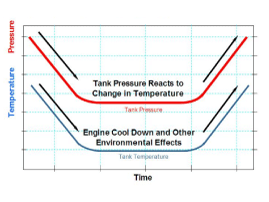Kia Optima Hybrid: Evaporative Emission Control System / NVLD(Natural Vacuum Leakage Detection) Description and Operation
| Description |
| [No leak] |

| [With 0.5mm leak] |

 Fuel Tank Air Filter Repair procedures
Fuel Tank Air Filter Repair procedures
Removal 1. Turn the ignition switch OFF and disconnect the battery negative (-) cable. 2. Lift the vehicle. 3. Disconnect the canister close valve connector (A). 4. Disconnect the ventilation hose (B) ...
 NVLD(Natural Vacuum Leakage Detection) Specifications
NVLD(Natural Vacuum Leakage Detection) Specifications
Specification Pressure [kPa (kgf/cm?, in H2O)Output Voltage (V)-6.67 (-0.068, -26.8)0.502.5+6.67 (0.068, 26.8)4.5 ...
Other information:
Kia Optima Hybrid (TF HEV) 2016-2020 Service Manual: Special Service Tools
Special Service Tools Tool Name / NumberIllustrationDescriptionLower arm ball joint remover0K545-A9100Removal of front lower arm from front axle Personal Protective Equipment NameIllustrationDescriptionInsulation gloveUsed when inspecting or working on the high voltage components[Insulation performance ...
Kia Optima Hybrid (TF HEV) 2016-2020 Service Manual: Panoramaroof Motor Repair procedures
Inspection 1. Disconnect the negative (-) battery terminal. 2. Remove the roof trim. (Refer to the BD group - "Roof trim") 3. Disconnect the panoramaroof motor (A) connector. 4. Ground the terminals as below table, and check that the panoramaroof unit operates. – When inspecting the panoramaroof ...
